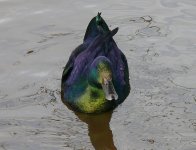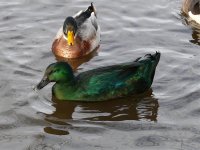KayD
Ochruros
This odd Mallard has been knocking around at Stubbers Green in Walsall, W Mids for a while now. In some lights it looks green, other times it looks purple, it has an iredescent sheen to its feathers. It associates with male Mallards, but its body is a bit longer.
Could it be a wild Mallard with melanistic pigmentation or is it just some dodgy hybrid? Interested to know.
Cheers :t:
Could it be a wild Mallard with melanistic pigmentation or is it just some dodgy hybrid? Interested to know.
Cheers :t:








